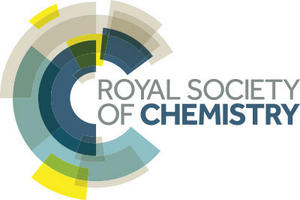Mattoussi elected to Royal Society of Chemistry class of 2015

Hedi Mattoussi, a professor in Florida State University's Department of Chemistry and Biochemistry and a faculty member in FSU’s Integrative Nanoscience Institute, has been elected to the Royal Society of Chemistry class of 2015.
Established in 1841, the society has more than 51,000 members around the world. The purpose of the organization is to foster growth and application of chemical society by the dissemination of chemical knowledge; to serve in an advisory role for the public in matters relating to the science and practice of chemistry; and to establish, uphold and advance the standards of qualification, competence and conduct of those who practice chemistry as a profession.

Professor Hedi Mattoussi
This is only the most recent in a serious of prestigious honors to have been bestowed on Mattoussi in recent years. Last year, he was elected a fellow of the American Physical Society’s Class of 2014. The APS is the world’s largest membership organization dedicated to advancing the knowledge of physics. New fellows are chosen by their APS peers for exceptional contributions to the field, such as outstanding physics research, important applications of physics, leadership in or service to physics, or significant contributions to physics education.
Mattoussi had previously been elected a fellow of the American Chemical Society in 2011.
Calling Mattoussi a "triple crown winner," Timothy Logan, chairman of the Department of Chemistry and Biochemistry, offered high praise for his colleague.
"Each of these recognitions is very significant and, for most of us, being recognized by just one of these awards is a 'lifetime achievement,'" Logan said. "To be recognized with all three makes a very strong statement about the sustained, high caliber of science that Hedi has been doing for his entire career."
Mattoussi’s decades of work in the laboratory have contributed important knowledge that could one day lead to earlier detection of diseases such as cancer or genetic disorders. For more than two decades, he has conducted research in several areas, ranging from the physics of polymers and liquid crystals to the physical chemistry of inorganic nanocrystals (namely luminescent quantum dots, as well as metallic and magnetic nanoparticles) and their interconnections with biological systems.
“Quantum dots and fluorescent metal clusters are very small nanocrystals that glow brightly when you illuminate them,” Mattoussi said. “They are very interesting scientifically due to some unique photophysical features. They are actively investigated by physicists, chemists and engineers for solar cells, light-emitting devices, sensor design, and imaging of biological samples. They could one day provide early detection of diseases such as cancer.”
In addition to his contributions to the fundamental understanding of quantum dots, Mattoussi has added to the scientific knowledge of polymeric materials, the surface functionalization of nanoparticles, the sensing of protein interactions and the imaging of live cells.

